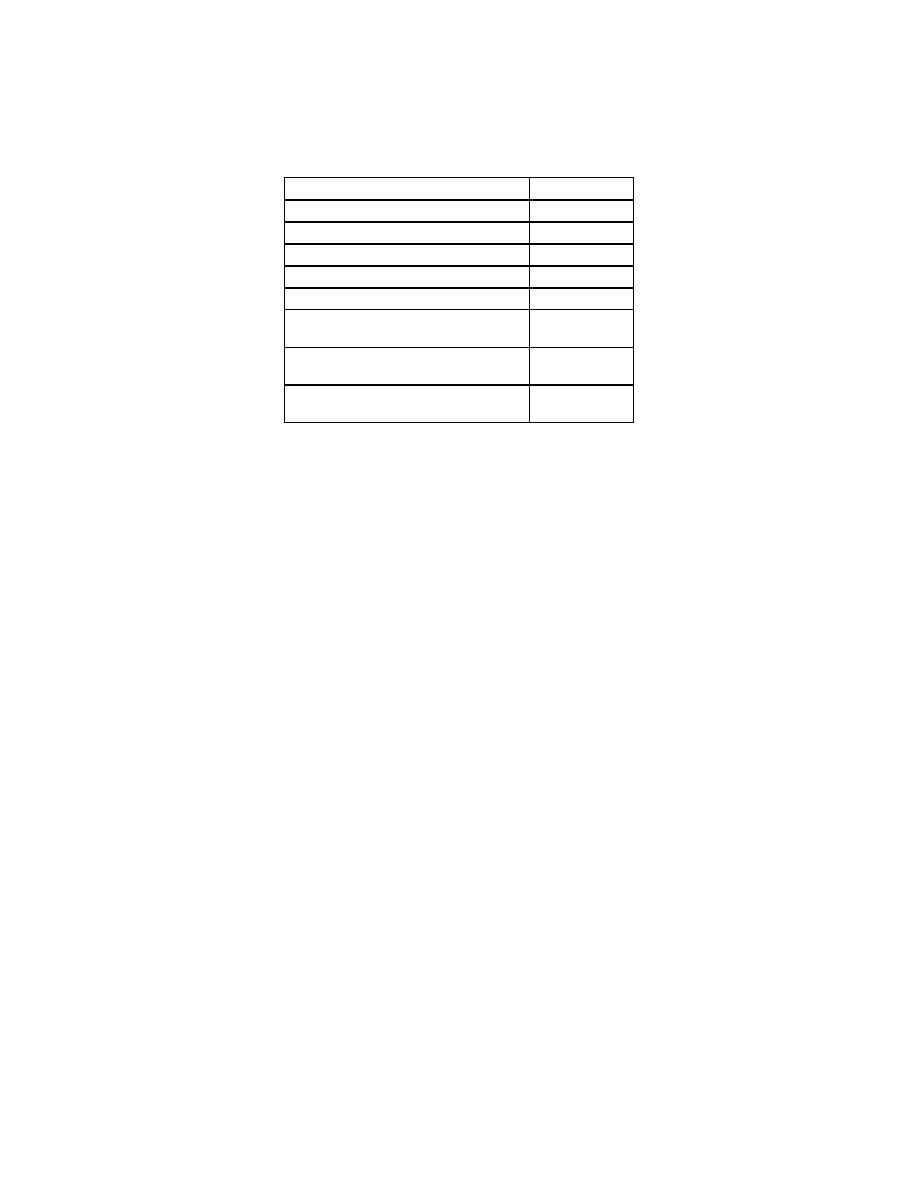
CEMP-ET
TI 809-53
01 May 1999
Table 2-14. Mean Durability of Common Steep Roofing
Years
Natural Slate
60
Clay Tile
47
Asbestos Cement Shingles
31
Metal Panels
28
Organic Fiber/Cement Shingles
26
Better Quality Asphalt Organic
18
Shingles
Better Quality Asphalt Glass Fiber
18
Shingles
Cheap Asphalt Shingles (don't use)
Perhaps only
10
2-10.
ADDITIONAL CRITERIA AND DISCUSSION.
a. Wind. Maximum wind speeds associated with locality and storm type determine needed
resistance. ANSI/ASCE 7-95 and EI01S010 provide design information.
(1) Adhered Systems. Air impermeable roof decks such as poured concrete, with
adhered or mechanically fastened insulation and fully adhered membranes, are highly wind
resistant. Tests conducted by the Factory Mutual System have determined that BUR systems
installed this way have resisted 8.6 kilopascals (180 psf).
(2) Metal Panel Systems. Metal panels are generally rated by the Underwriters 580
procedure, with UL 90 ratings considered excellent. However, because some SSSMR panel
systems with UL 90 ratings have failed in service, structural standing seam metal roof systems
must pass the ASTM E1592 test method (formerly known as the Corps of Engineers air-bag test).
(3) Ballasted Systems. Ballasted single-ply systems rely on heavier and larger ballast in
more wind prone exposures. SPRI has developed wind guidelines in their ANSI-SPRI RP-4
document based upon ANSI/ASCE 7-95 guidelines. Higher parapets have a beneficial effect on
ballasted systems. Above certain building heights, SPRI recommends against the use of ballast.
(4) Mechanically Fastened Systems. Mechanically fastened single-ply systems use
narrower starter sheets and increased fastener density in high wind areas. Examples of layout
can be found in Factory Mutual Loss Prevention Data Sheet 1-29.
(5) Foam Systems. Sprayed-in-Place Polyurethane Foam (SPF) systems have proven
very wind resistant and are effective in protecting the structure against wind hurled missiles.
(6) Problems with Small Roof Aggregate. Roofs adjacent to airport tarmac activities
should avoid aggregate surfacings as loose aggregate may be blown off the roof and sucked into
engines. Loose stone ballast which is much larger, is used successfully at many airports.
(7) Wind Rated Roofs. Underwriters Laboratories lists wind rated systems in their
Roofing Materials and Systems Directory as Class 30, 60 or 90. Factory Mutual Research
Corporation lists wind rated systems in their Approval Guide with ratings ranging from 60 to 210
psf.
2-19


 Previous Page
Previous Page
